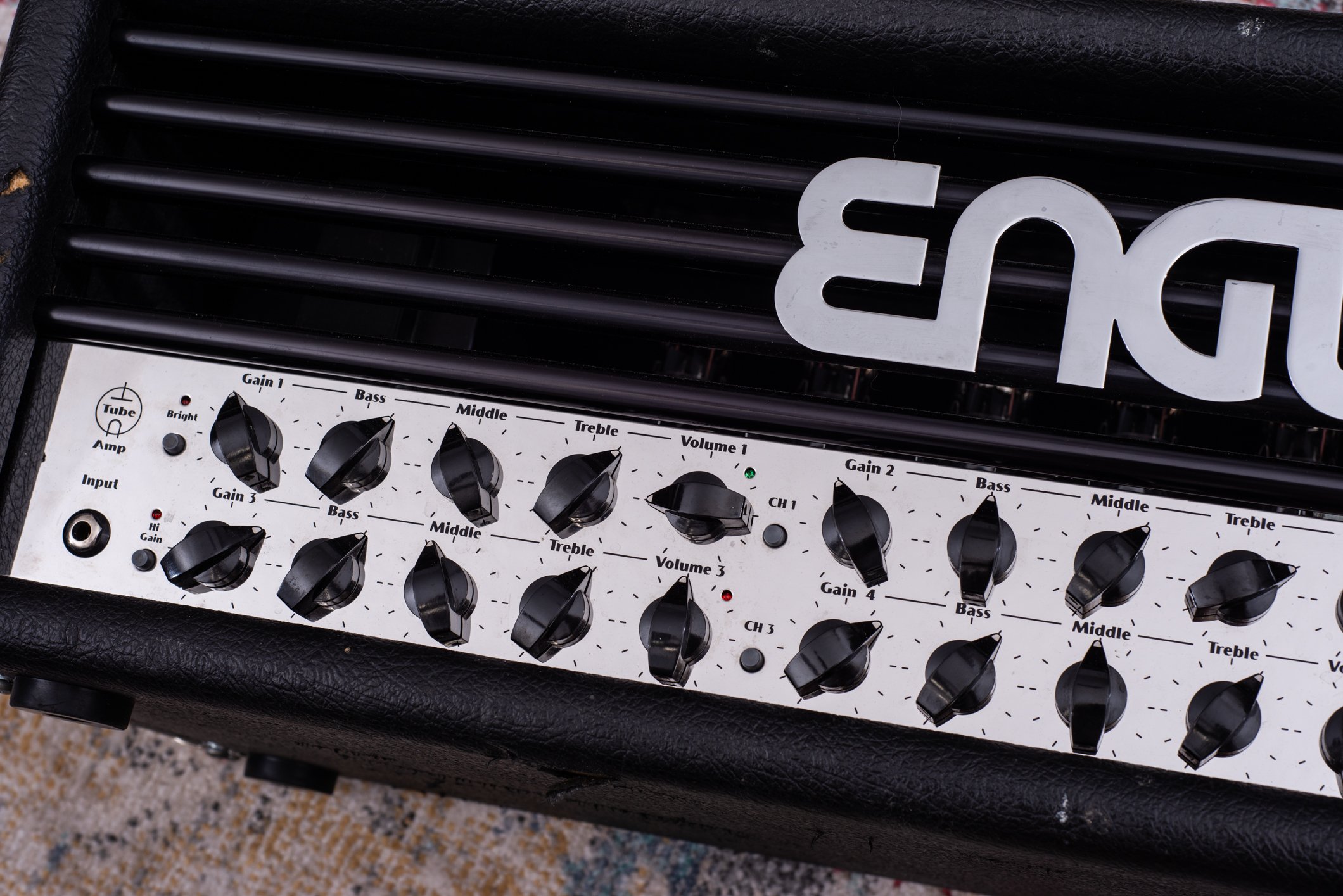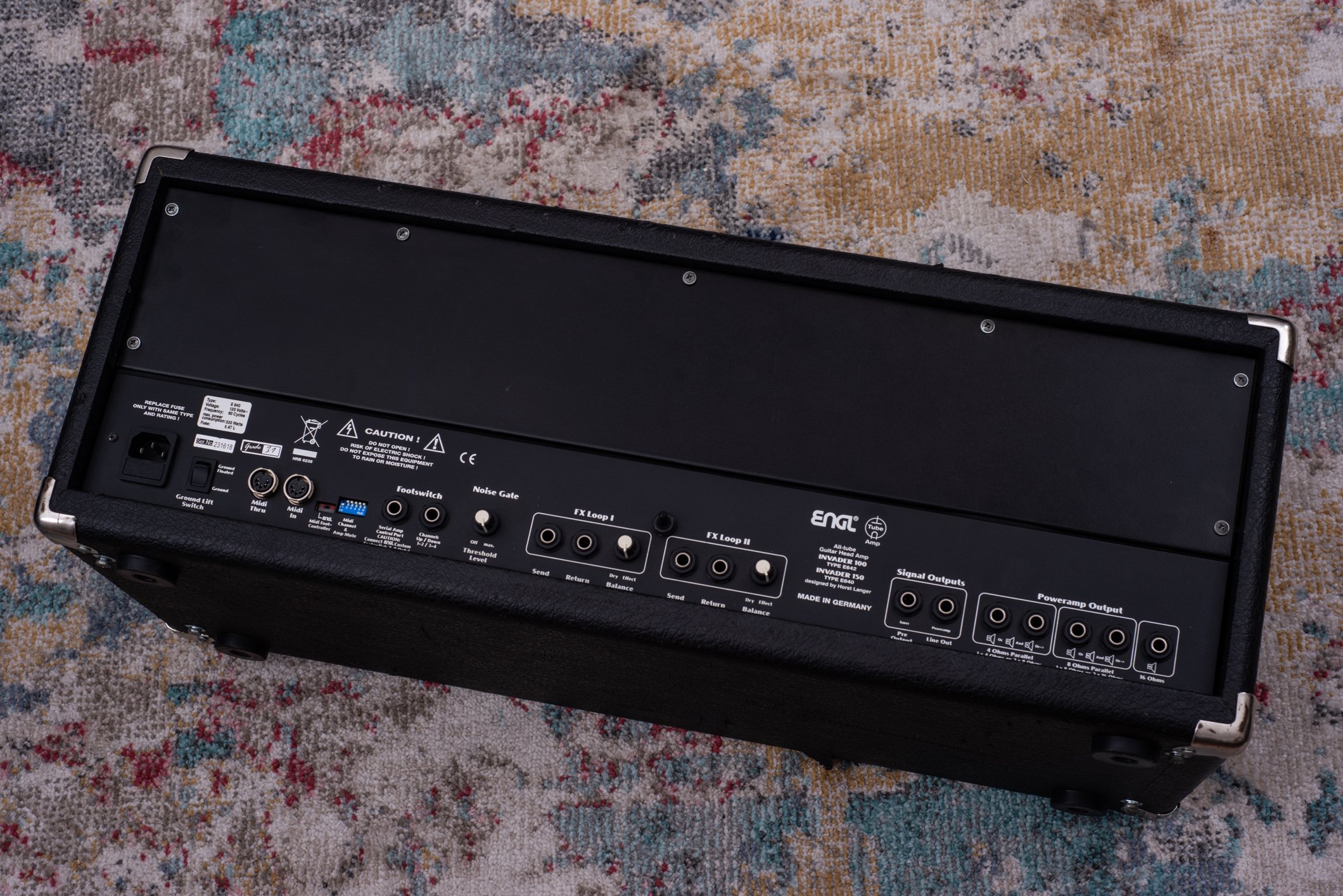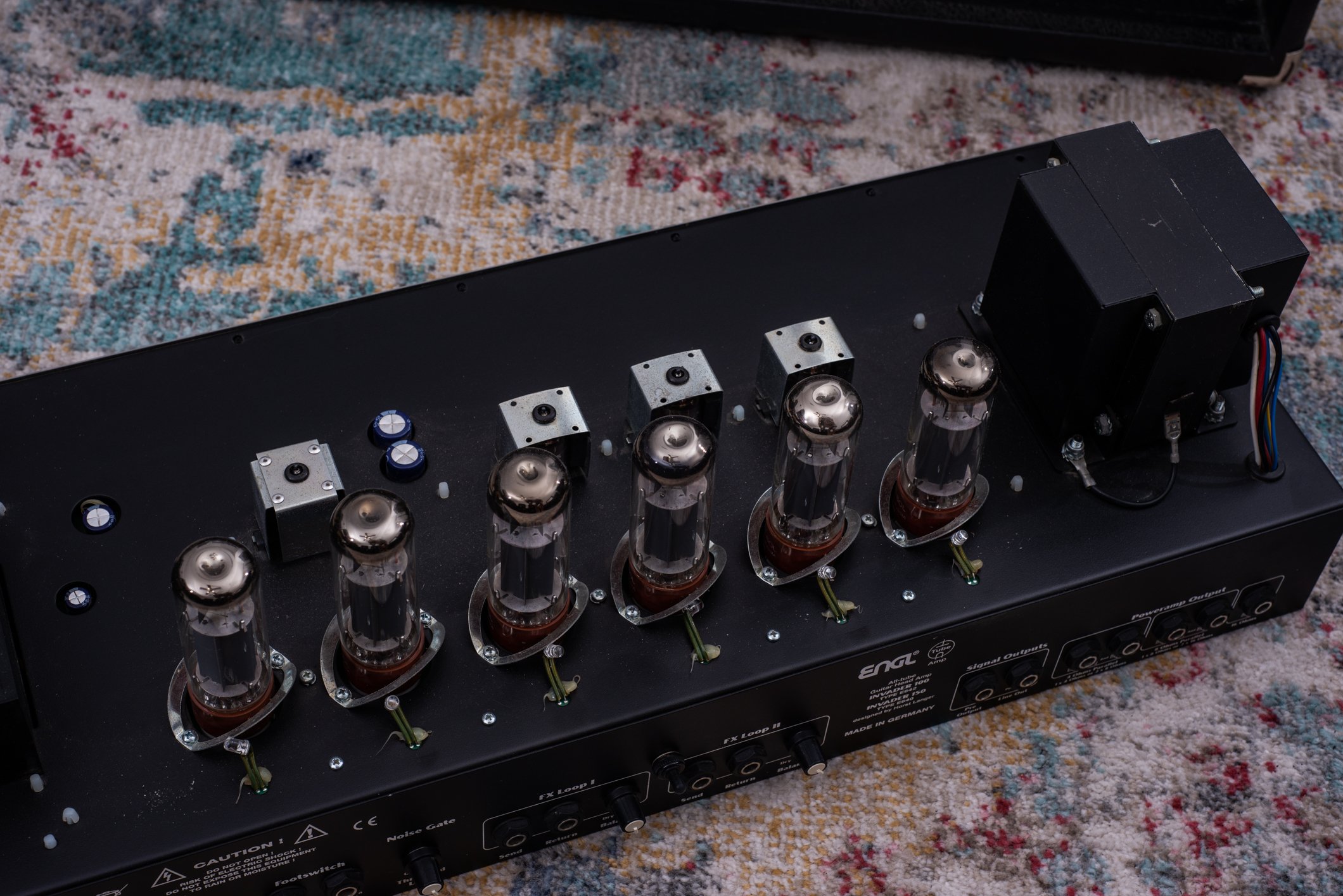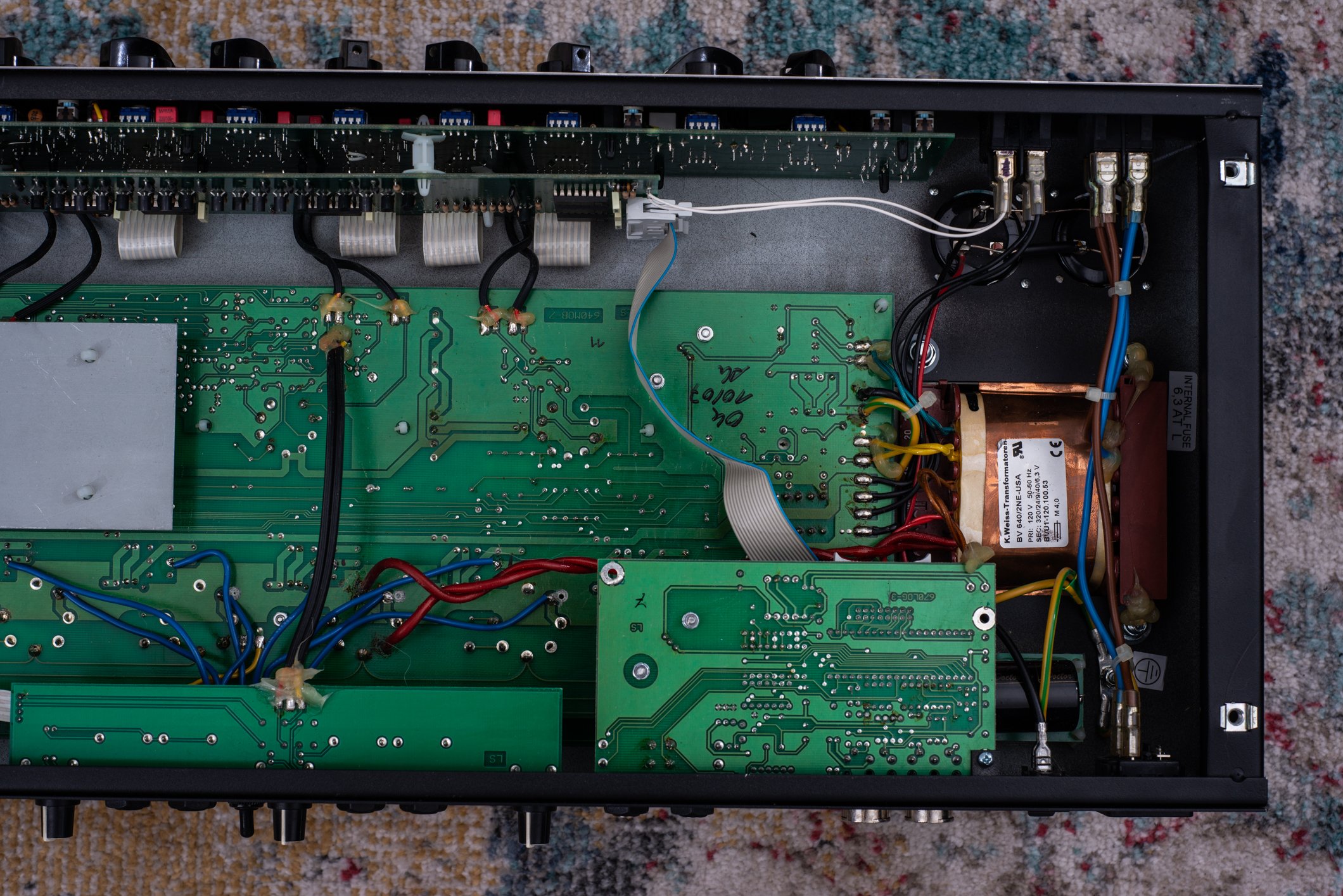2008 ENGL InVader 150 (E640)
Specs
4 Channels
150w Output
6x EL34 Power Tubes
4x 12AX7 Preamp tubes
2x Effects loops
Built-in Noise Gate
Switchable master volumes
MIDI Switching and memory (remembers if Bright or Hi Gain are enabled per patch)
$2999 in 2009
Overview
This amp, the flagship of the ENGL line for a while, was actually my first ENGL head. I picked it up after spotting one for a great price (what a surprise) just before the Invader “2” was released. At the time, I didn’t have much experience in what ENGL had to offer, but I was really impressed by the Raider combo and really wanted to understand the differences between all of the main line head offerings.
So first things first, this Invader 150w, and the Invader 100w which gets much better reviews, are identical amps except for the power section, and the clean channel. There is a lot of misinformation about this amp so I actually reached out to ENGL who confirmed this. Essentially, the only difference is that the clean channel on the 100w allows more bass through - all other functions and tones are the same, unless you are truly pushing a 100w amp to the limits of power tube distortion.
Furthermore, the Invader 100w II, or E642/2, is also identical to this amp unless you use the Z16 Wizard Sound Module. I have found countless threads online where people say that the original amps do not let you use the “bright” switch on channels 3 and 4 - this is absolutely false. According to Martin Zimmerman (ENGL’s Technical Director):
“Well, in Channel 1 the bright switch is a bright switch, in Channel 2 it acts like a shape switch (sort of a mid cut), in Channel 3 and 4 it acts like a mid boost.”
And having played the amp, I can say it sounds immensely better to me with the bright switch engaged on channels 3 and 4 - for most tones I like at least. I suspect this is why on the Invader II, they simply renamed this control to “Sound.”
Of course, the Invader II still has its advantages when integrated with that Z16 Sound Module, which allows for seemingly infinite tone adjustments. I haven’t used it myself yet, but it’s definitely on my list - but if you’re contemplating buying an Invader 100 or an Invader II 100, and you don’t have the Z16, it’s the exact same amp.
Right, so with that cleared up, let’s talk about the amp. It’s a 4 channel head, and each channel has the full suite of Gain, Volume, 3-band EQ controls, a bright switch, and a high gain switch. There are two effects loops, switchable master volumes, a noise gate, and master presence and depth controls - and all of this can be controlled via MIDI with the Z12 Foot Controller. It sounds complicated, but it’s incredibly intuitive once you get the hang of it. For example, you can click in footswitch button 1, then select whatever channel you like, whether or not the FX loop or noise gate are on, bright switch, or high gain mode, and then just hold down the “Write” button until the LED flashes. Now no matter where you are on the amp, pressing button 1 will return you to the exact same settings you just saved. You can even put the amp on standby, and assign standby to a footswitch button if you like to have a footswitchable mute function. With 10 buttons and potentially multiple banks, you can really customize how you want this to work for live performances.
As far as the tone, I can see why it’s fairly polarizing, and why someone who might’ve come from a Fireball or Powerball might be frustrated at first. Starting with the gain tones, Channel 3 is the high gain rhythm channel on this amp - not channel 4. Channel 3 has a punchy but articulate low end, but it can sound a bit anemic without the “bright” switch engaged to me - and even worse with the high gain mode turned off. I’d be there are tons of players who played channel 3 straight and thought it was very weak and scooped sounding, and sterile. Or, plenty of players who went directly to channel 4 expecting a high gain chugging rhythm tone, only to find that channel 4 has a much looser low end and thicker tone - it’s not unusable for rhythm, but it seems designed more for leads to me, especially when the gain is more saturated.
Channel 1 and 2 are the highlight for me though. The clean is extremely wide ranging, and innately scooped and polished sounding with of course, insane headroom. Adding the gain or bright switches does just as you’d expect - more cut, more sparkle, and can get a bit of grit in there if you like a dirtier clean or light crunchy lead sound. Channel 2 is kind of the “vintage” gain channel, but make no mistake - Channel 2 with the high gain switch on can get quite heavy, but it’s voicing is less scooped than channels 3 and 4. Engaging the “bright” switch on this channel, just like Martin said, is more of a scoop and gives the notes a little more clarity but at the cost of some of the fuller, vintage character it has normally. I find this channel very usable in any combination of switches, and it’s the highlight of the amp for me, compared to channels 3 and 4 which I find I only like with the bright (mid boost) switch engaged at all times.
Overall it’s a great amp and the feature list is extensive. It can be difficult to dial in, and the voicings of each channel are so different I can understand why it can be a bit divisive, especially for such an expensive amp - top of the line besides Special Editions from ENGL at the time it was introduced. Once dialed though, it’s a true beast of versatility, and with the new Invader II’s integration with the Z16 Sound Module, the possibilities seem almost endless.













